Profile: Tucson, AZ
The Sonoran Desert area is a lot more than its trademark saguaro cactus.
Retirees relish sports games and performances at the University of Arizona as well as Tucson’s museums, Southwestern culture and weather reports filled with sunshine and low humidity.
 Where To Retire
Where To Retire In Tucson, towering saguaro cacti hover above a landscape where jackrabbits cool off in the shade of mesquite trees and javelinas leave tracks in the sand. Sunlight plays across the five mountain ranges that ring the metropolis, a nearly 500-square-mile mix of desert and distinctive peaks in southern Arizona’s Pima County. The slopes turn from dawn’s soft orchid to midday’s ocher and dusk’s magenta as the setting sun touches the Tucson Mountains west of the city. The region has the quintessential cowboy feel. Prospectors once searched for gold in the area and ranchers drove herds of cattle across the valleys. Saguaro National Park, which edges metropolitan Tucson on two sides, preserves the scenic panoramas of the Sonoran Desert — the only place in the U.S. where saguaro cacti grow.
The desert landscape and the climate attracted Jay Pierstorff, 61, and his wife, Jan, 65, who moved from Woodland, CA, about 20 miles northwest of Sacramento, CA. Like many, they first fell in love with Tucson on vacations. “We were snowbirds,” says Jay, a semiretired photographer. “We visited family; my wife’s brother and mother live here. The we started to spend more time in Tucson. We rented a place for a few months and realized we would rather spend all our time here than in the Sacramento area.” Jay and Jan, a former salon owner and hairdresser, moved to the city in 2006, purchasing a house in an all-ages community. “In California, we lived in suburbia and had a ‘good-neighbor fence’ 6 feet high,” Jay says. “Where we live in Tucson, we sit on our back patio and we see saguaro cactus. We have neighbors, but they are not right near us.”
 Where to Retire
Where to Retire Surrounded by mountains and desert terrain, Tucson is a haven for
outdoor adventures. The city also has a thriving downtown and
public streetcar that connects shops, arts venues and restaurants.
Their home is about 5 miles from the Arizona-Sonora Desert Museum, where inspiration and learning is nurtured through natural history exhibits, a zoo, botanical garden, art gallery and aquarium. The 98-acre, mostly outdoor museum features 2 miles of walking paths that lace through cacti, creosote bushes and mesquite trees. Bobcats, ocelots, Gila monsters, skunks and other local creatures live in the exhibits’ habitats.
Jay began serving as a docent at the museum in 2007 and in 2010 he took a part-time paid position, teaching a photography course. He has taken photos of javelinas, mule deer and birds in their backyard.” Southern Arizona makes an impression on you,” says Bob DeLaney, a commercial real estate broker, who with his wife, Lucy, a homemaker, first experienced the Tucson landscape on dude ranch vacations. “It’s a different landscape, like going to the moon. You have these great vistas of lush desert.”
After the DeLaneys, both 64, became empty nesters, they left Winchester, MA, on October 2007 for Tucson as part of their pre-retirement planning. Bob continued in commercial real estate, switching his focus from finding properties to leasing warehouses and manufacturing facilities. They purchased a home in a community on the city’s east side, a half-mile from Saguaro National Park. “We hear coyotes howling every night,” Bob says.
The DeLaneys like being in the same town as the University of Arizona. “We enjoy going to U of A basketball games,” he says. Comedians and other performers are on stage at the university’s famed Centennial Hall, which has hosted speeches by national figures. Tucson is about 70 miles north of the Mexican border and sits at an elevation of more than 2,600 feet. Retirees are lured by its relatively low humidity and 350-plus days of sun each year. “We love the sunshine. It makes us feel good,” Jay says. “It’s OK in summer if you are good with the heat and we like the heat.” By venturing out in the hottest part of the season, they have witnessed monsoon rainfalls and spectacular desert lightning.
Real estate broker Glenda Grow, a senior specialist with Keller Williams Southern Arizona, reports that weather is the No. 1 reason people retire here. “It’s a great place in winter, fall and spring,” she says. In summer, some people take trips or visit family in milder locales.
Linda Cloninger, 63, a former school counselor, and her husband, Gary, 63, who worked as a postal inspector, split their time between residences in St. Louis and Tucson. They became acquainted with the area when their son attended the University of Arizona.
 Where to Retire
Where to Retire The Arizona-Sonora Desert Museum holds classes and field trips on topics like wildflowers, hummingbirds and archaeology.
The couple retired in 2006, and last September, they bought a two-bedroom, two-and-a-half-bath house in Del Webb at Dove Mountain, a 55-plus development in Marana at the base of the Tortolita Mountains, about 35 miles northwest of Tucson. “Because the community is new, most of us are on the younger side of retirement,” Linda says. The couple take advantage of the city’s cultural attractions, including the Tucson Symphony Orchestra and concerts at the Fox Tucson Theatre on West Congress Street. An Art Deco gem, the theater opened its doors on April 11, 1930, as the city’s movie palace. Downtown’s decline in retail and new competition led to the Fox’s closing in 1974. Following its purchase in 1999 by the Fox Tucson Theatre Foundation and a $14 million restoration, the Fox reopened in December 2005.
Enjoying Tucson’s downtown has never been easier. The Sun Link streetcar, launched in July, covers a 4-mile route connecting the University of Arizona with entertainment venues, restaurants, shops and other highlights.
Among the trendy restaurants in the Congress Street area are chef Janos Wilder’s Downtown Kitchen and Cocktails, which offers a savory mix of modern American cuisine with global influences; Hub Restaurant and Ice Creamery, serving tasty pastrami sandwiches and lobster rolls at lunch as well as house-made ice cream; and Proper, with menu items like lamb sausage and caramelized pork chops. El Presidio Historic District, Tucson’s oldest neighborhood, takes its name from the Spanish fort built in 1775. Although the fort is no longer standing, the partially reconstructed Presidio San Agustin del Tucson, now a museum, features mannequins in historic attire and artifacts found on-site, among other items. The district also contains the six structures of the Tucson Museum of Art and Historic Block. Arts shops and the La Cocina Mexican restaurant are arranged around a courtyard, where locals and tourists relax and listen to the twittering of hundreds of sparrows in the branches of the huge tombstone rosebush. El Charro Cafe, also in the district, has been serving Mexican food since 1922.
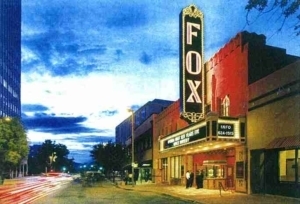 Where to Retire
Where to Retire The Fox Tucson Theatre, which opened in 1930, today hosts concerts and shows and is one of the main draws to downtown.
Visitors grab a Turquoise Trail tour brochure and follow the turquoise line painted on the sidewalks. The path winds past Spanish 19th-century adobe houses and other noteworthy 19th- and 20th-century structures. Another drawing card is the Tucson Gem and Mineral Show, held for two weeks or so each January and February at more than 40 sites. “I am a beader and I enjoy going to the show,” Linda says. “It’s a feast for your eyes. Everyone who visits us loves to go there. Last year, my sister bought a necklace with a big stone and she said it was a great deal.”
Rick and Holli Palmer moved from Alexandria, VA, to Tucson after six years of pre-retirement research that included visits to Austin, TX; San Antonio; Las Cruces, NM; Las Vegas; Albuquerque, NM; and Phoenix.
Rick, 57, a former naval officer and business developer in the defense industry, and Holli, 52, who worked as a flight attendant, bought a house in February 2014 at Del Webb at Rancho Del Lago, an active-adult development in Vail, about 25 miles southeast of the city. “Tucson has plenty of what we require and a heck of a lot less of what we don’t like,” Rick says. “We are close enough to shopping, a military base and good medical facilities.” The University of Arizona Medical Center is known for its care in cancer, cardiology and orthopedics.
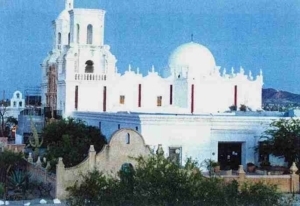 Where to Retire
Where to Retire The Mission San Xavier del Bac was founded in 1692 and the current church was built in the late 1700s.
Tucson real estate proved to be a good buy for the Palmers. “For what you pay in Alexandria for a house, you could purchase two or three homes in Tucson,” Holli says. The good value extends to their Pulte Homes residence. “It’s open, airy, light and easy to maintain,” Rick adds. “The house is smartly built, well-insulated with properly polarized windows.” The couple enjoy the community’s activities. “Each month, a potluck, line dancing and karaoke are held. I go to the gym, the ladies’ breakfasts and lunches,” Holli says. “The neighbors are very welcoming.” Rick lifts weights at the fitness center and swims in the pool. The Palmers also walk the network of trails.
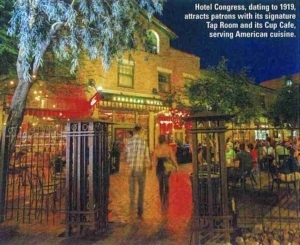 Where to Retire
Where to Retire Hotel Congress, dating to 1919, attracts patrons with its signature Tap Room and its Cup Cafe, serving American cuisine.
Like other Western states, Arizona may experience a water shortage in the future. Expert sources predict a 17 to 29 percent chance of water scarcity in any year from 2016 to 2026. Such a shortage depends on many factors, including continued below-normal rainfall and climate change. On the plus side, Arizonans are getting better at conserving water by utilizing less in landscaping and by recycling “graywater” for use on golf courses. Although a shortage is not synonymous with a drought, continued water conservation and the creation of contingency plans are real concerns for some residents. Retirees, however, often see more pros than cons. The active lifestyle convinced longtime Tucson resident Nancy Gray, 63, to remain here after her husband died in 2010.
“You can do things outdoors every day in Tucson,” says Nancy, who sold the public riding stables business that she and her husband owned for more than 20 years after closing on a house in Del Webb at Rancho Del Lago in January 2014.
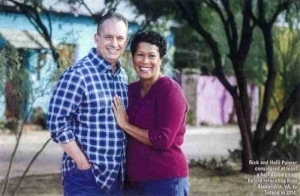 Where to Retire
Where to Retire Rick and Holli Palmer considered at least a half-dozen cities before relocating from Alexandria, VA, to Tucson in 2014.
“As a widow, I didn’t want to have to maintain 3 acres of horse property or feel isolated at my home on 4 acres,” she says, adding that she takes advantage of the get-togethers at the clubhouse as well as its gym and sports courts. “I have three dogs and I feel safe walking them — about 5 miles within the community each day. If a person is an active senior, you cannot beat this place.” How do the locals handle the summers when temperatures sometimes top 100 degrees? “You just adjust your schedule,” Nancy says. “You change your life so you do your outdoor activities early in the morning and then do things indoors in the afternoon.”
Holli also gives Tucson a thumbs-up. “In the evening, Rick and I look out at the stars, moon and the mountains,” she says. “We enjoy the beautiful sunsets. I am so glad we moved here.”

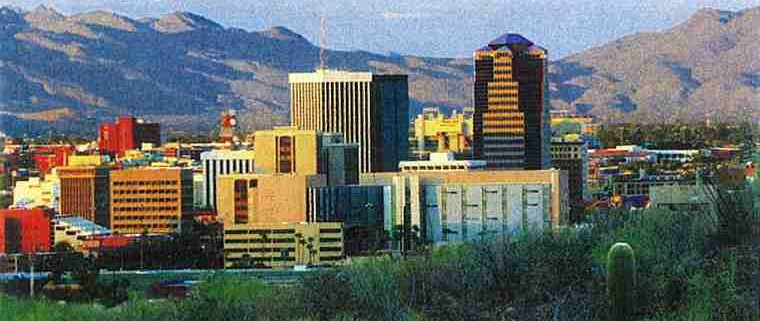
 Where to Retire
Where to Retire Where to Retire
Where to Retire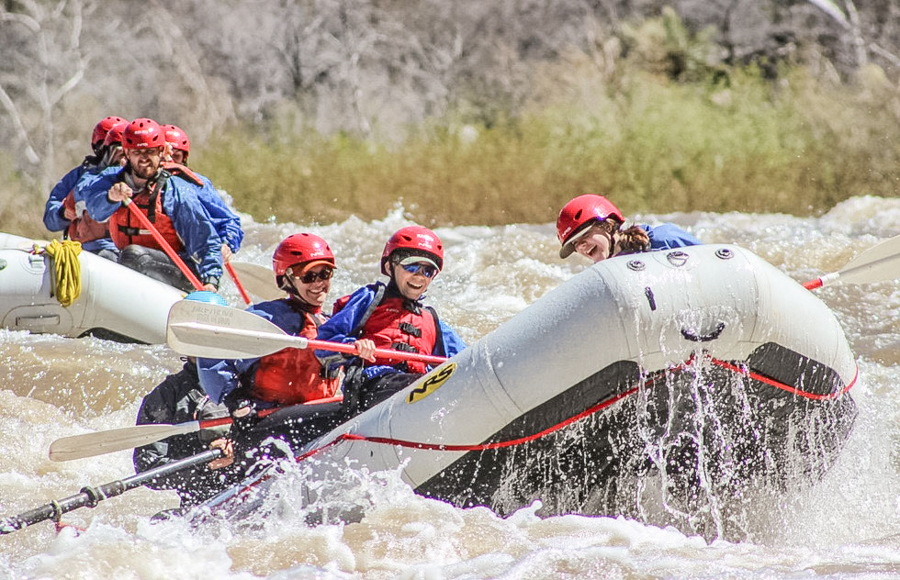
 Where To Retire
Where To Retire Physician's Money Digest
Physician's Money Digest Physician's Money Digest
Physician's Money Digest Mapquest
Mapquest BellaOnline.com
BellaOnline.com